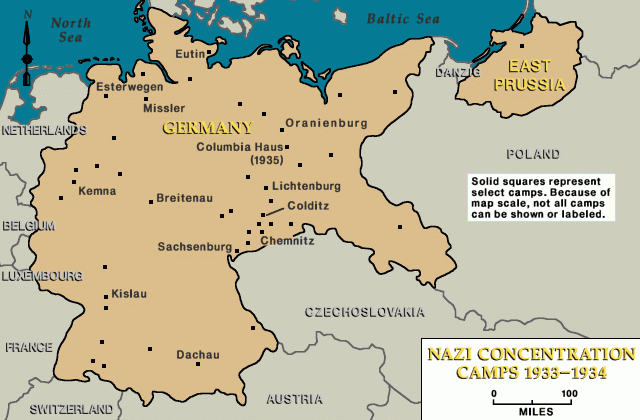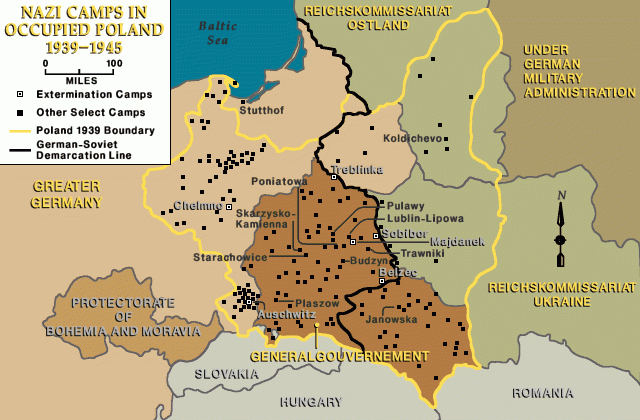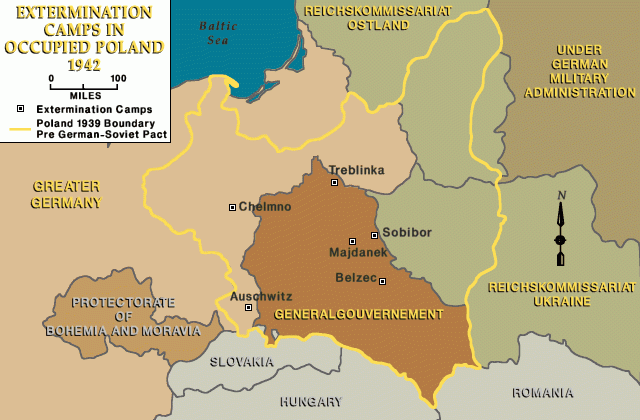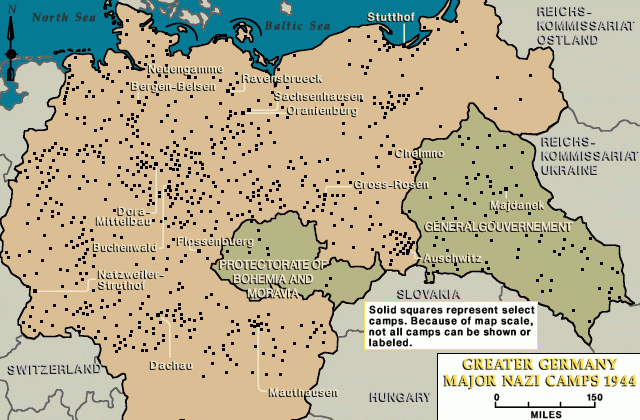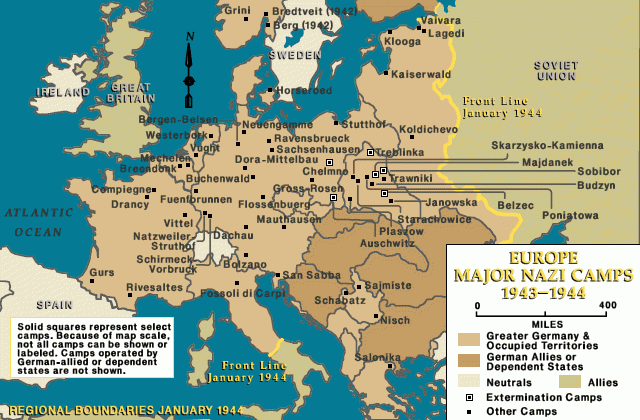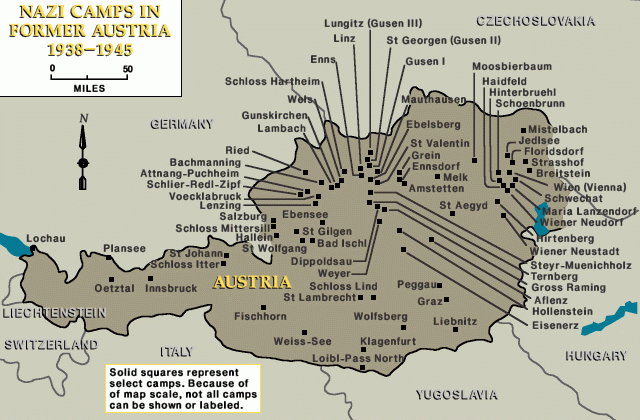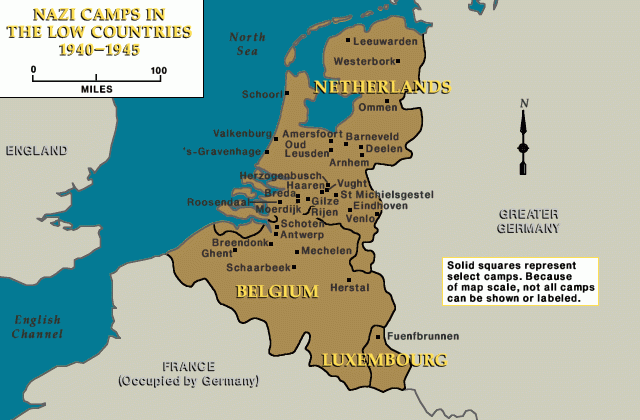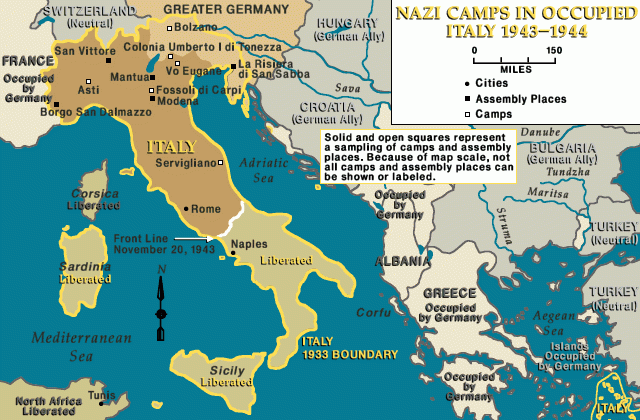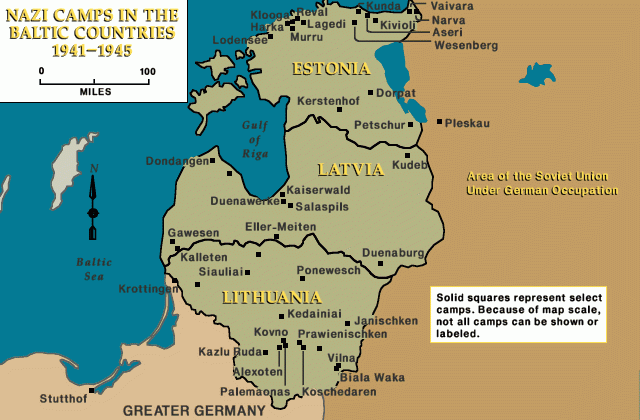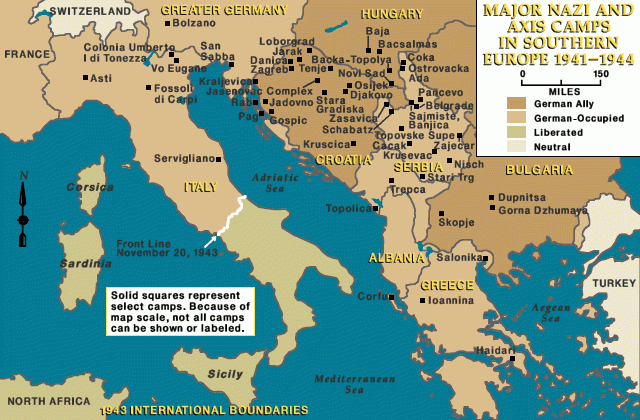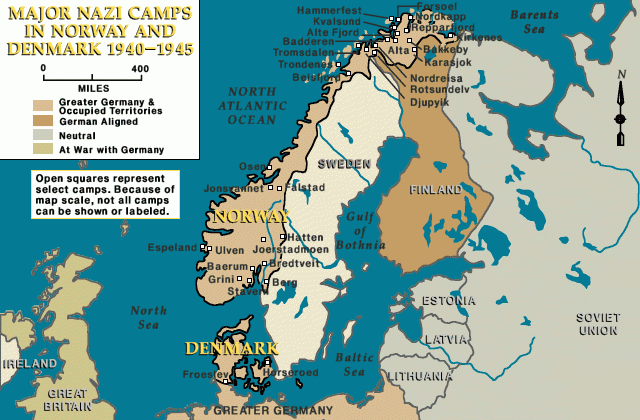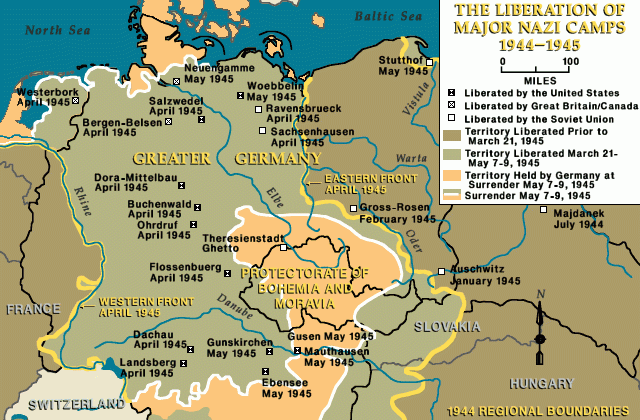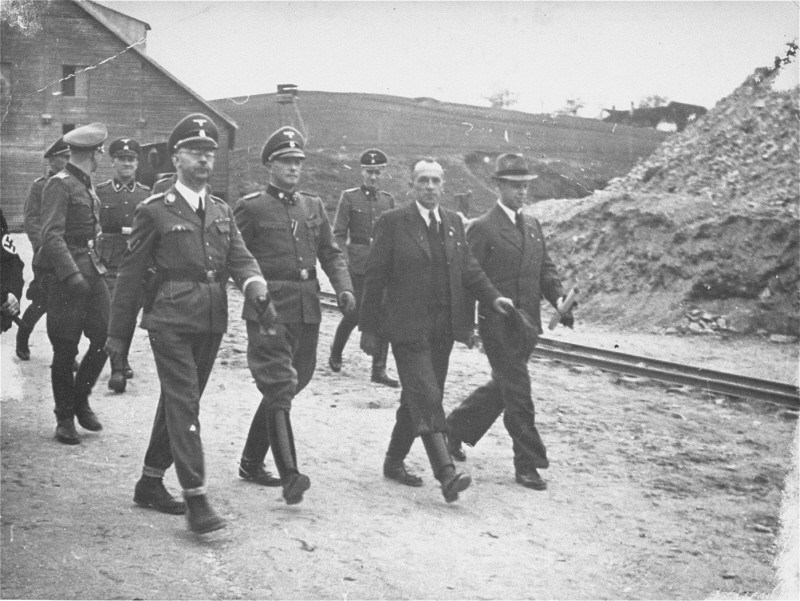
SS and the Camp System
In 1933-1934, SS chief Heinrich Himmler secured SS control over a centralized concentration camp system.
Throughout Germany, various civilian authorities and police agencies had established concentration camps during 1933 to incarcerate political enemies of the Nazi government. Impressed with the Dachau concentration camp established by the SS in March 1933, Hitler authorized Himmler to centralize these camps under SS leadership. Himmler established (in the SS Main Office) an SS Inspectorate of Concentration Camps under the leadership of Dachau camp commandant and SS General Theodor Eicke.
After 1934, SS officers commanded all concentration camps in Germany and in German-occupied territory. Units known as SS Death's-Head Units (SS-Totenkopfverbände) guarded and administered the camps. Although the Security Police (Gestapo and Kripo) had exclusive authority to incarcerate, release, and “officially” order the execution of prisoners, the daily life of prisoners lay in the brutal and merciless hands of the camp commandants and these SS Death's-Head Units, which were not part of the police forces.
In 1937, there were only four concentration camps in Germany; by 1944, there were approximately 30 main camps and hundreds of subcamps located throughout the Greater German Reich and German-occupied Europe.
Before 1938, the vast majority of concentration camp prisoners were political opponents of the Nazi regime, while a minority of the prisoners were repeat criminal offenders, so-called asocials, Jehovah's Witnesses, gay men and men accused of homosexuality, and Roma (Gypsies). Roma were often classified as “criminals” and/or “asocials.”
Although in reality most Roma in Germany were settled and somewhat integrated into German society, the SS and police treated them according to long-standing negative "Gypsy" stereotypes as petty criminals and persons who engaged in anti-social behavior. And with intensified police enforcement of Paragraph 175 (the statute criminalizing sexual relations between men), gay men and men accused of homosexuality were also often classified in the camps as “criminals” and “asocials.”
Despite their presence in numbers vastly out of proportion to their percentage in the German population, Jews remained a minority among the prisoners prior to 1938. In most cases, Gestapo or Kripo officials incarcerated Jews in the camps because they had been activists in the Social Democratic, Communist, or liberal democratic parties, had been visible opponents of the Nazi Party or specific Nazi policies, or had been advocates of policies or members of organizations that the Nazis found to be “hostile to the state and the race.”
With German expansion in 1938, the availability of prisoners for forced labor in the concentration camp system took on added significance. The SS was determined that the Thousand-Year Reich would be ruled by its self-selected, “racially pure” elite. To ensure this development, its leaders invested significant financial and human resources in planning for the construction of the German settlements in Poland and the Soviet Union in accordance with their visions of permanent German rule. As early as the mid-1930s, the SS leaders of the concentration camps and the chief of the SS Administration Main Office (SS-Verwaltungshauptamt), SS General Oswald Pohl, recognized the potential of concentration camp prisoners as forced laborers to produce construction materials, and eventually to do the manual labor to build and maintain these settlements.
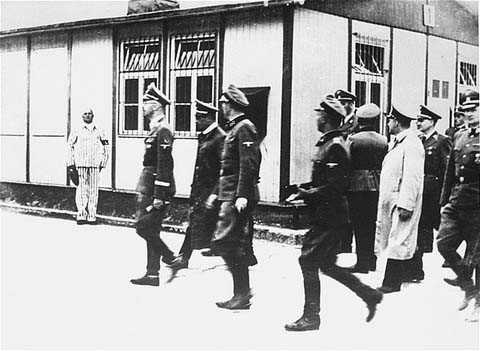
At this time, the SS founded a number of companies, such as the German Earth and Stone Works (Deutsche Erd- und Steinwerke; DESt) and the German Equipment Works (Deutsche Ausrüstungswerke; DAW) to produce construction materials and equipment for the SS. The Sachsenhausen (1936), Buchenwald (1937), Flossenbürg (1938), and Mauthausen (1938) concentration camp sites were chosen precisely because of their proximity to soil suitable for making bricks, to a brickworks factory, or to stone quarries. In 1938, the Criminal Police initiated two massive roundups of so-called “work-shy” and asocial individuals, in part to increase the concentration camp population available for forced labor. Among the so-called work-shy and asocials whom the Kripo incarcerated were Roma (Gypsies).
In the first three years of the war, the SS leaders expanded the concentration camp system not merely to detain the tens of thousands of new political prisoners of non-German nationality who chose to resist German occupation policies, but also to increase the pool of forced laborers available for the settlements that the SS planned to construct now that Poland and the western Soviet Union were in German hands. SS leaders reached decisions to construct new gigantic concentration camps at Auschwitz-Birkenau and Lublin-Majdanek (1941-1942) based on expectations of thousands of Soviet prisoners of war who would be available for forced labor (1941) and, later, on tens of thousands of Jewish forced laborers (January-March 1942).
After spring 1942, the overwhelming majority of prisoners in both Auschwitz and Majdanek (until November 1943) were Jews. In April 1942, Auschwitz-Birkenau took on the function of a killing center. Until November 1943, Lublin-Majdanek served primarily as a forced-labor camp for Jews within the framework of Operation Reinhard. Majdanek also served the SS from time to time as a killing site, where the SS and police killed Jews under Operation Reinhard.
In winter 1942, it became clear that Germany would be engaged in a long war and that labor needs for German war production could not be met even by the deportation of millions of civilian forced laborers from occupied Poland and the occupied Soviet Union. After this time, the leadership of the SS administration and the Inspectorate of Concentration Camps deployed concentration camp labor, at a profit, in accordance with contracts signed by German military and civilian agencies and private firms producing armaments, related war materials (e.g. uniforms), and construction materials to repair or replace facilities destroyed by Allied bombing. To facilitate this process, Himmler incorporated the Inspectorate of Concentration Camps, now led by SS General Richard Glücks, with the SS Economic-Administration Main Office (SS-Wirtschafts-Verwaltungshauptamt-WVHA) under Pohl in March 1942.
Henceforth, the concentration camps and their prisoners, the SS-owned companies, and the administrative offices of the SS were all together in one agency. Under the auspices of the WVHA, the number of subcamps multiplied into the hundreds and even thousands. Enterprises using concentration camp labor ranged from large state combines like the Hermann-Göring-Werke and large, private corporate conglomerates like the I.G. Farben chemical combine to small private firms like Oskar Schindler's German Enamelware Factory (Deutsche Emalwarenfabrik) in Krakow, Poland.
During World War II, SS camp authorities would kill around two million prisoners—Jews, political prisoners, Roma (Gypsies), so-called asocials, recidivist convicts, gay men, Jehovah's Witnesses and others—in the concentration camp system.
Critical Thinking Questions
- Research what pressures and motivations might have influenced members of the SS.
- How does the SS embody the systematic nature of the attempted “Final Solution?”
- What other institutions and professions collaborated with the SS to operate the camp system?
- What other institutions and groups in society benefited from the camp system?
- In what ways did the SS coordinate the activities of German and foreign police agencies to persecute perceived "enemies of the state"?
- Did the outside world have any knowledge about the camps? If so, what, if any, actions were taken by other governments and their officials?


